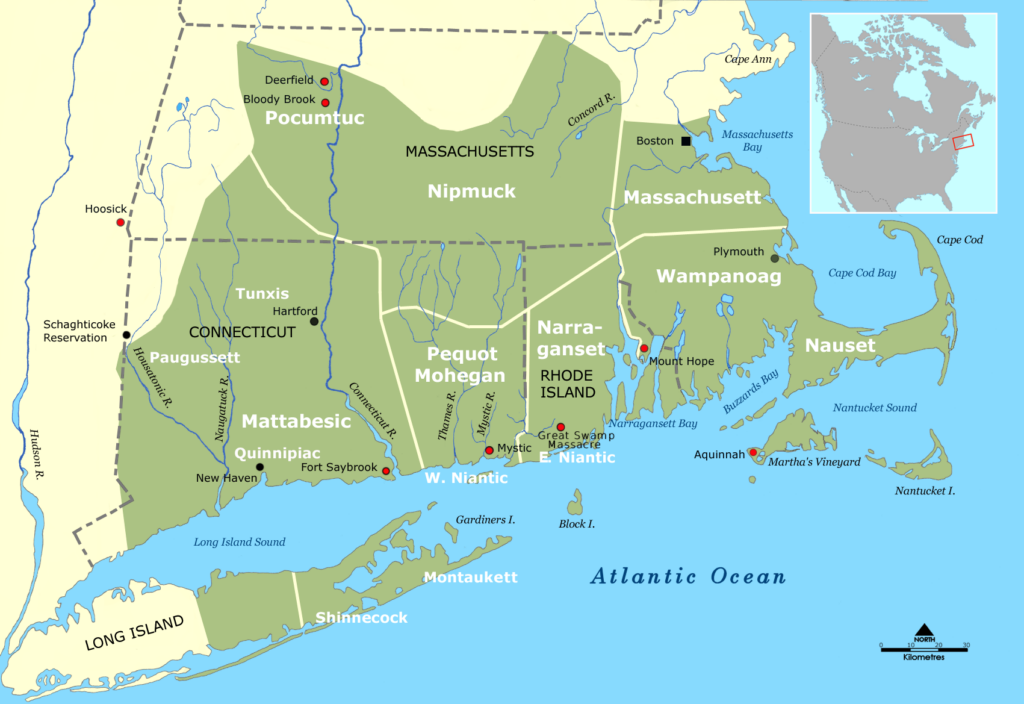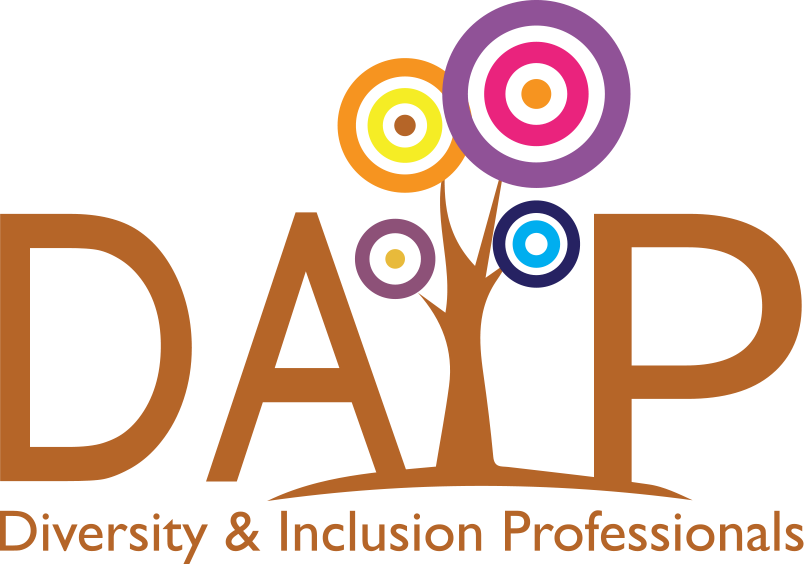Tribal territories of Southern New England tribes about 1600. Grey dotted lines are approximate modern political boundaries.

“I want to take a moment to reflect on the lands on which we reside. We are coming from many places, and we want to acknowledge the ancestral homelands and traditional territories of Indigenous and Native peoples who have been here since time immemorial and to recognize that we must continue to build our solidarity and kinship with Native people across the Americas and across the globe. DAIP is based out of Providence, Rhode Island, and so we acknowledge and honor the Narragansett, Pokanoket, and Wampanoag people.”
DAIP began incorporating land acknowledgements into our educational programs and gatherings in the last few years, and it’s become our standard, ongoing practice to acknowledge the original inhabitants of the lands where we live and work. We often follow our land acknowledgements with a labor acknowledgement, and mentions of other injustices and tensions that are currently top-of-mind, out of respect for the emotional weight many of us may be bringing to an event or conversation.
Here is a land & labor acknowledgement template created by past DAIP board president Ralph Tavares that we tailor for each of our programs, revising based on the perspective of the program speaker or the current emotional climate. Ralph’s format is inspired by Amalia Mesa of SpeakOut – The Institute for Democratic Education & Culture.
We often get questions from our community on whether or not organizations should build acknowledgements into their own programs, and if so, how to go about crafting their own. There are many helpful, detailed guides available online–including this comprehensive, detailed resource from Lorén Spears, executive director of Rhode Island’s Tomaquag Museum. I highly recommend that you review her recommendations.
Here are a few of my own tips for developing your own land acknowledgement.
- 1. Consider your motivation. Why is it important to you and your institution to develop a land acknowledgement? Make sure you’re motivated by a desire to support and pay respect to Native Americans, rather than simply doing it because others are.
- 2. Do the work. Conduct research on the area where you live to uncover: whose land you are on? What is the history of Native communities in that area—how were they impacted by colonization, treaties, and displacement? What Native communities are currently living and thriving in your area? You can start by using https://native-land.ca/ to find the
- 3. Incorporate Native expertise. Reflect on the perspectives you should bring to the table to assist in the accuracy of this land acknowledgement. Please keep in mind that it’s better to utilize resources that already exist, rather than expect unpaid labor from Native Americans. If necessary, consider hiring someone so you can compensate them for their expertise.
- 4. Translate awareness into action. A land acknowledgment should merely be a starting point. Consider how you and your organization can take action to support Native communities—whether by donating money, supporting Native-led advocacy campaigns, or taking other actions to help raise awareness and support Native work.
A good place to begin your research is by looking through the resources provided by local Native American museums and cultural centers. If you’re located in Southern New England, the organizations and people listed below are a good place to start.
- Rhode Island’s Tomaquag Museum
- Massachusetts’s The North American Indian Center of Boston, and their resource hub.
- Key contacts:
- Raquel Halsey (Mandan, Hidatsa, and Arikara Nation), executive director; rhalsey@naicob.org
- Gloria Colon (Mi’kmaq), outreach coordinator; gcolon@naicob.org
- Key contacts:
- Connecticut’s Pequot Museum
- Dr. Kyles Mays, Afro-Indigenous (Saginaw Chippewa) author and scholar of US history, urban studies, race relations, and contemporary popular culture.
This process can be uncomfortable, but it’s important that we acknowledge the harm that’s been done, and take steps to work towards awareness, support, and ultimately reparations.
– Patricia Holliday, on behalf of the DAIP board

